本帖最后由 levycui 于 2019-7-23 18:53 编辑
问题导读:
1、如何理解Linear层初始化?
2、如何理解实现Conv层?
3、如何理解实现RNN层?
4、如何使用Tensorflow初始化?

聊起初始化,大家应该都了解大名鼎鼎的Glorot初始化(也叫Xavier初始化),Kaiming初始化(也叫He初始化)。
0. 起因
之前调了一个模型,原作者是使用Tensorflow实现的,我在复现过程中使用了PyTorch,虽然已经尽可能注意二者的差异,但是效果始终差那么点。后来想到,或许是因为二者层初始化不同所导致的(虽然最终证明不是……),在这个过程中,总结了一点有意义的内容,这里和大家分享。
1. PyTorch初始化方法
首先我们来看一下PyTorch中初始化的方法,此处我们只关心平时最常使用到的3类操作:Linear,Conv,以及RNN。
1.1. Linear层初始化
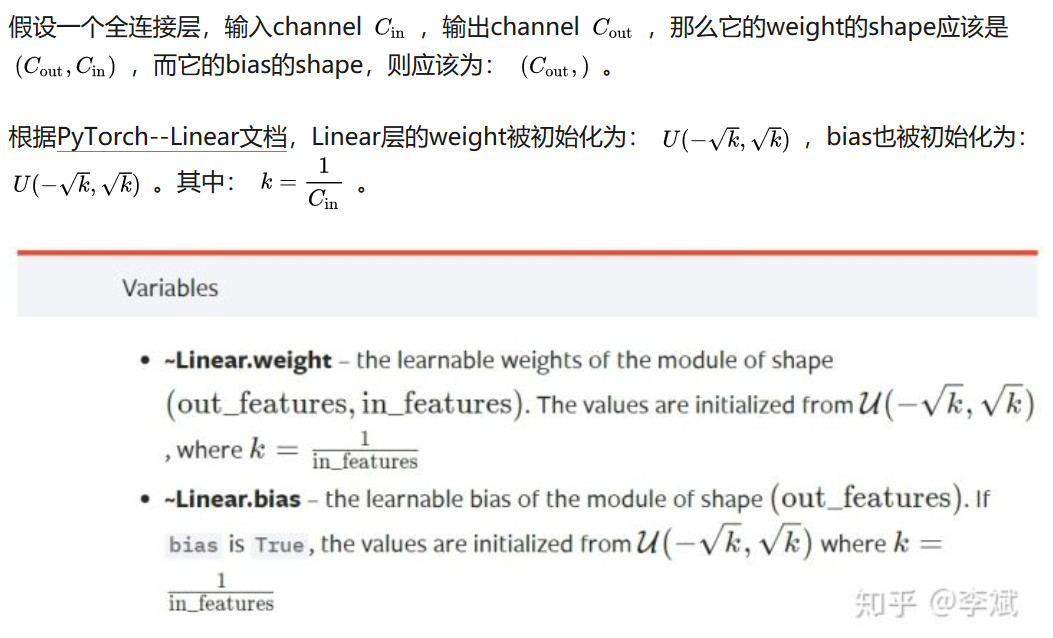

[mw_shl_code=python,true]import numpy as np
import matplotlib.pyplot as plt
import torch
import torch.nn as nn
# ============================================================
# Check PyTorch Initialization (conv2d / linear / lstm).
# ============================================================
# --------------------
# 1.1. PyTorch Linear
# --------------------
dummy_linear = nn.Linear(100, 250)
layer = dummy_linear
layer_w = layer.weight # Should be U(-0.1, 0.1)
layer_w = layer_w.detach()
layer_w_np = layer_w.numpy()
layer_w_np = np.reshape(layer_w_np, [-1])
print(layer_w_np.shape)
fig, ax = plt.subplots()
ax.hist(layer_w_np, bins=10)
ax.set_title("PyTorch Linear Initialization")
plt.show()[/mw_shl_code]
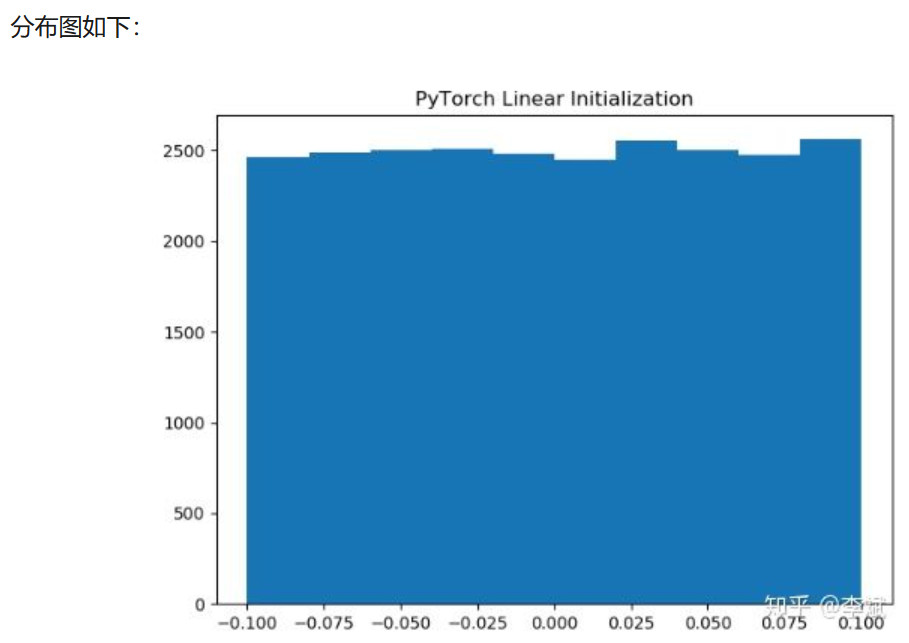
1.2 Conv层

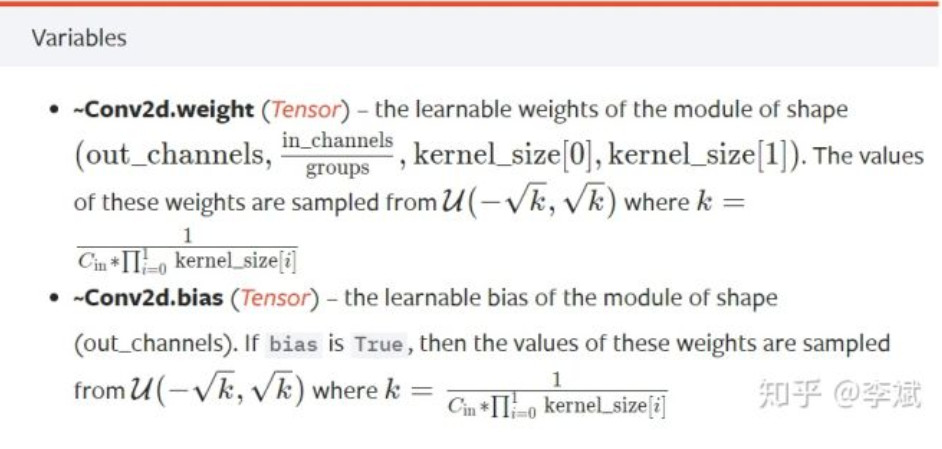
其实比较奇怪的是,在这两个例子里,我们的bias也用相同的方法进行了初始化。在我的印象中,bias要不然就是使用全0进行costant初始化,要不然就是直接不加bias,今天得亏是看了文档,才知道在PyTorch里面,bias是默认使用相同的方式进行初始化的。
[mw_shl_code=python,true]import numpy as np
import matplotlib.pyplot as plt
import torch
import torch.nn as nn
# --------------------
# 1.2. PyTorch Conv2d
# --------------------
dummy_conv = nn.Conv2d(25, 64, 2)
layer = dummy_conv
layer_w = layer.weight # Should be U(-0.1, 0.1)
layer_w = layer_w.detach()
layer_w_np = layer_w.numpy()
layer_w_np = np.reshape(layer_w_np, [-1])
print(layer_w_np.shape)
fig, ax = plt.subplots()
ax.hist(layer_w_np, bins=10)
ax.set_title("PyTorch Conv2d Initialization")
plt.show()[/mw_shl_code]
分布图如下:
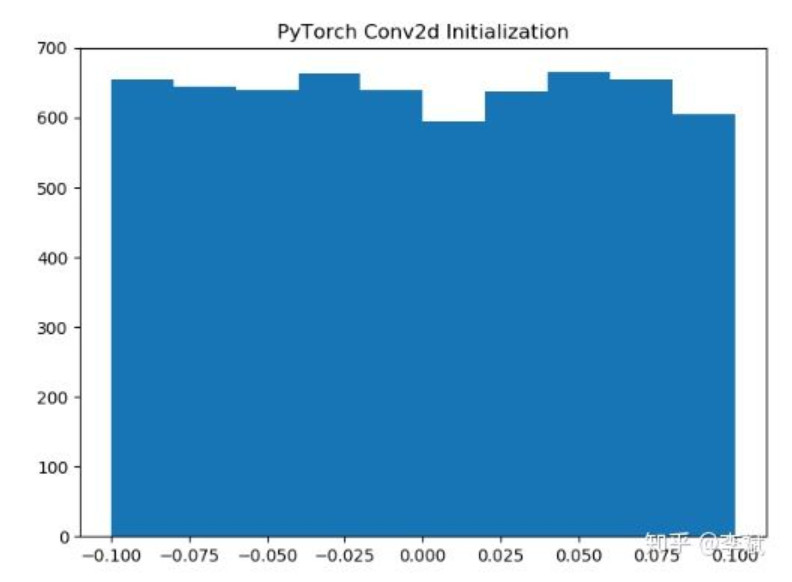
1.3. RNN层
终于来到RNN层了,其实我的本意也就是看看两个框架初始化是不是一样,那快开始吧。
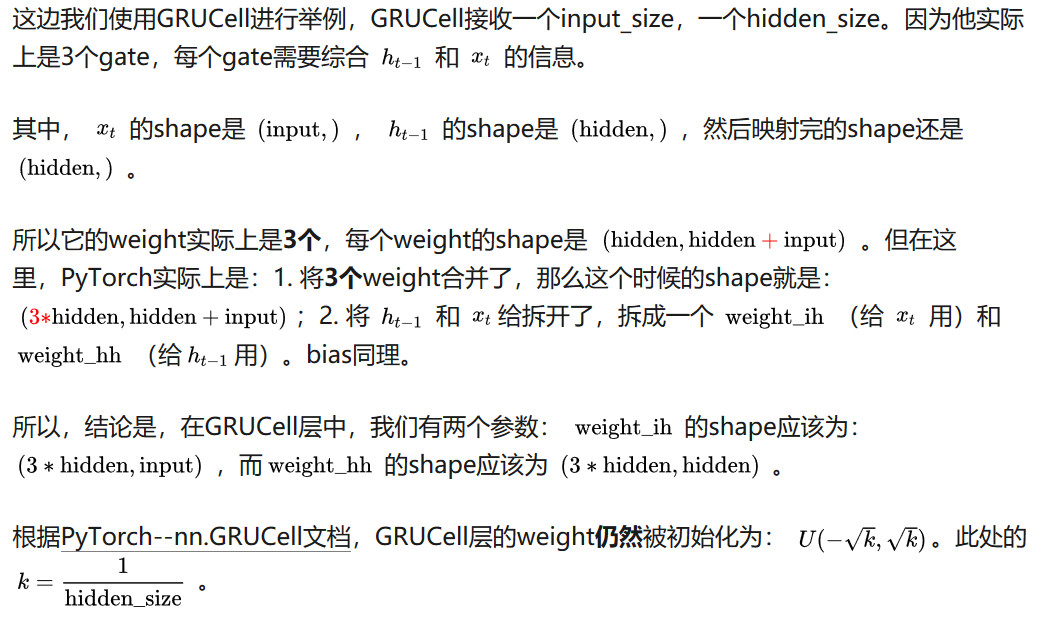
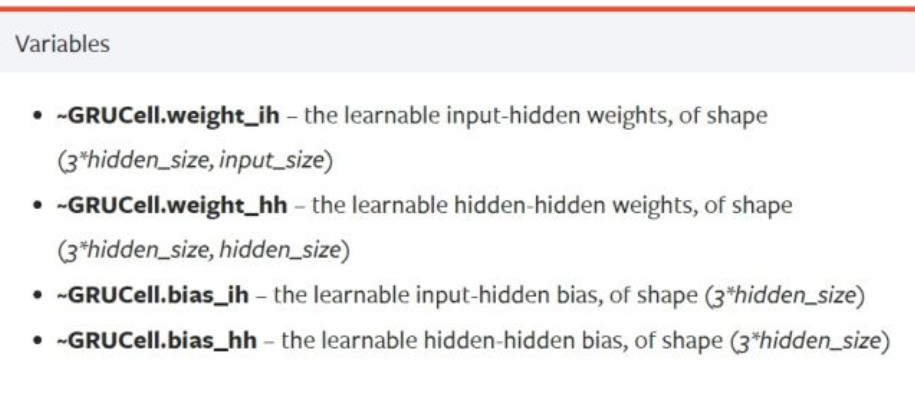

[mw_shl_code=python,true]# --------------------
# 1.3. PyTorch GRUCell
# --------------------
dummy_gru_cell = nn.GRUCell(input_size=50, hidden_size=100)
layer = dummy_gru_cell
layer_w = layer.weight_hh # Should be U(-0.1, 0.1)
layer_w = layer_w.detach()
layer_w_np = layer_w.numpy()
layer_w_np = np.reshape(layer_w_np, [-1])
print(layer_w_np.shape)
fig, ax = plt.subplots()
ax.hist(layer_w_np, bins=10)
ax.set_title("PyTorch GRUCell Initialization")
plt.show()[/mw_shl_code]
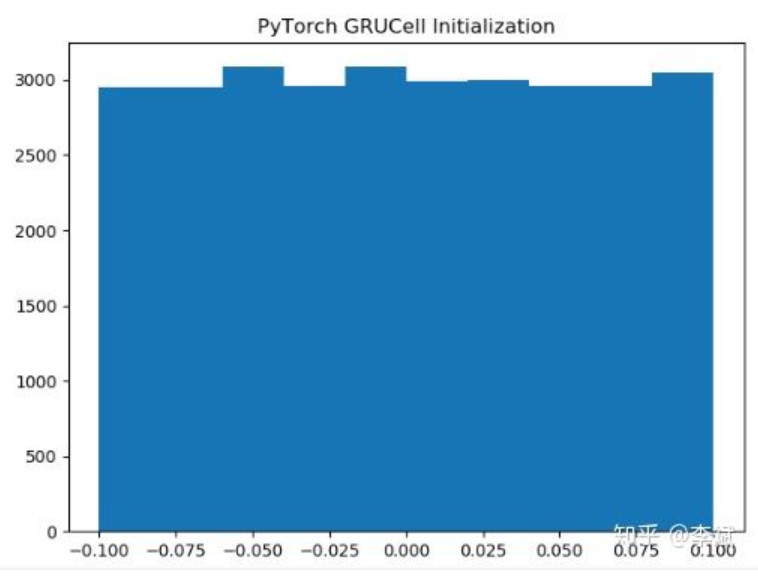
小结:
PyTorch有一套自己的初始化方法,这个东西不完全是Glorot初始化,我们就管它叫类Glorot初始化吧,嗯,类Glorot_uniform初始化。
然后上面几个代码也再简单不过,我只是卡了一下,总是让它的weight分布是一个从-0.1到0.1的一个均匀分布。

2. Tensorflow初始化
撒花,终于到2了!尽管今年已经是2019年,但tensorflow的文档还是一言难尽,读者经常需要dive into source code才能知道你到底想要干嘛。与之相对应,PyTorch的文档就友好很多。怎么说呢,我感觉读者,一方面,其实不想知道太底层的东西,另一方面,拜托您别封装的那么死,我们不是要的不是fit一下就完的东西。
尽管tf1.x已经日趋式微,不过这边我们还是用的是tf1.x版本进行实验。
2.0. tf.get_variable
上面PyTorch是没有这一节的,不过考虑到Tensorflow里面所有的layer的变量声明,实际上都使用的是tf.get_variable这个API,我们有必要做一个简单的查看。
换句话讲,你个tf.get_variable搞明白了,后续那些层,甚至不用再看。
看一下源码,反正文档是指不上了,在variable_scope.py里面,给了下面一句话:
If initializer is `None` (the default), the default initializer passed in the variable scope will be used. If that one is `None` too, a `glorot_uniform_initializer` will be used. The initializer can also be a Tensor, in which case the variable is initialized to this value and shape.

例1. tf.get_variable,二维情况。
[mw_shl_code=python,true]import os
import numpy as np
import matplotlib.pyplot as plt
import tensorflow as tf
# ============================================================
# Check Tensorflow Initialization (conv2d / linear / lstm).
# ============================================================
print(tf.__version__)
os.environ['CUDA_VISIBLE_DEVICES'] = '7'
# --------------------
# 2.0. PyTorch GRUCell
# --------------------
w_2d = tf.get_variable('w_2d', shape=[240, 360])
init = tf.global_variables_initializer()
# --------------------
# Executation
# --------------------
config = tf.ConfigProto()
config.gpu_options.allow_growth = True
with tf.Session(config=config) as sess:
sess.run(init)
w_2d_eval = sess.run(w_2d)
print(w_2d_eval.shape)
layer_w_np = np.reshape(w_2d_eval, [-1])
print(layer_w_np.shape)
fig, ax = plt.subplots()
ax.hist(layer_w_np, bins=30)
ax.set_title("Tensorflow get_variable 2D initialization")
plt.show()[/mw_shl_code]
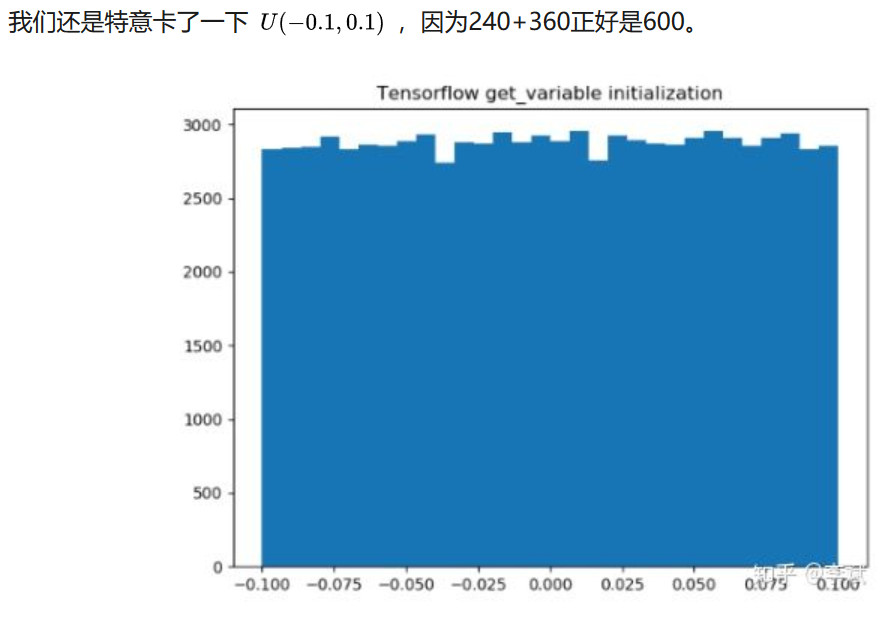
例2. tf.get_variable,三维情况,新增的维度在前。

[mw_shl_code=python,true]import os
import numpy as np
import matplotlib.pyplot as plt
import tensorflow as tf
# ============================================================
# Check Tensorflow Initialization (conv2d / linear / lstm).
# ============================================================
print(tf.__version__)
os.environ['CUDA_VISIBLE_DEVICES'] = '7'
# --------------------
# 2.0. PyTorch GRUCell
# --------------------
w_2d = tf.get_variable('w_2d', shape=[100, 240, 360])
init = tf.global_variables_initializer()
# --------------------
# Executation
# --------------------
config = tf.ConfigProto()
config.gpu_options.allow_growth = True
with tf.Session(config=config) as sess:
sess.run(init)
w_2d_eval = sess.run(w_2d)
print(w_2d_eval.shape)
layer_w_np = np.reshape(w_2d_eval, [-1])
print(layer_w_np.shape)
fig, ax = plt.subplots()
ax.hist(layer_w_np, bins=30)
ax.set_title("Tensorflow get_variable 3D initialization")
plt.show()[/mw_shl_code]
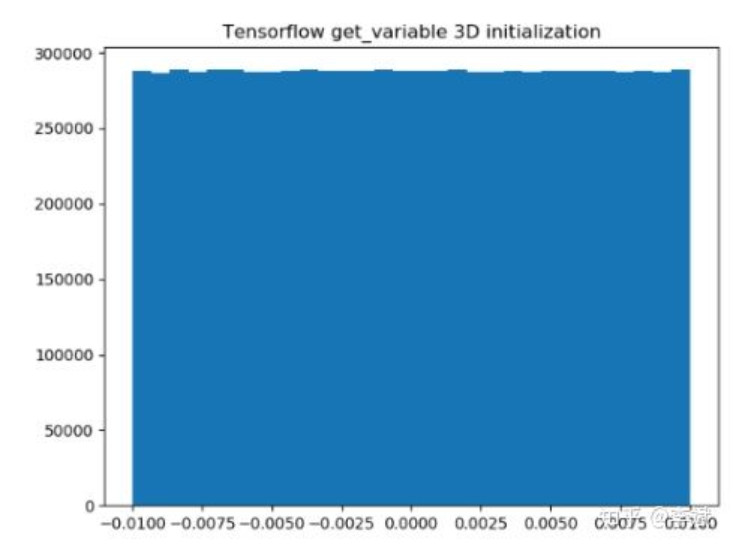

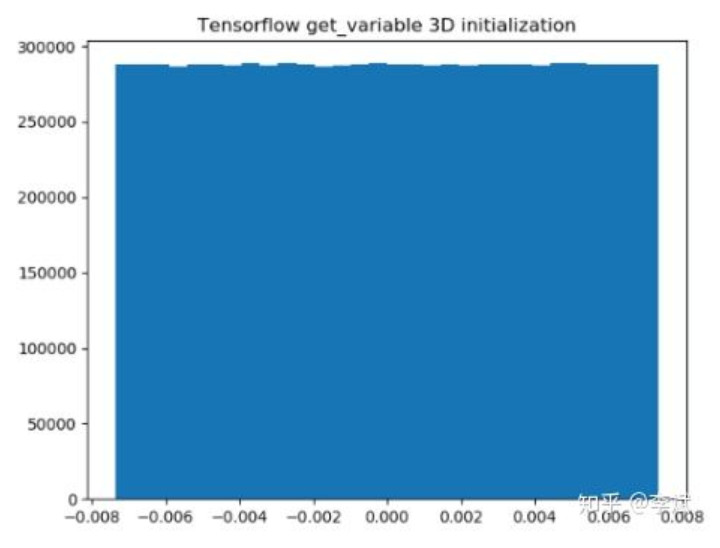
完全吻合!
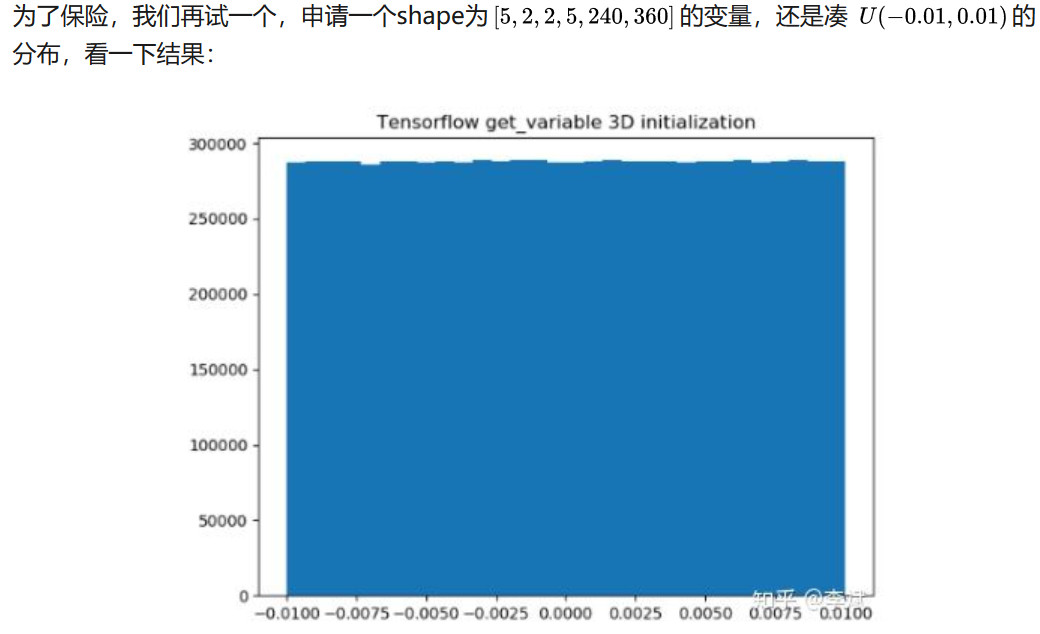
好了,我觉得现在可以总结一下了:

其实还想写一下,不过已经发现没必要了,因为在Tensorflow里面,所有变量的申请都使用tf.get_variable这个API,换言之,Tensorflow不会像PyTorch一样根据不同的层,采取不同的初始化策略。所以你只要知道变量的shape,那么按照上面的法则,你就知道它遵循一个什么分布了。
作者:李斌
来源:https://zhuanlan.zhihu.com/p/72853886
最新经典文章,欢迎关注公众号
|
 /2
/2 